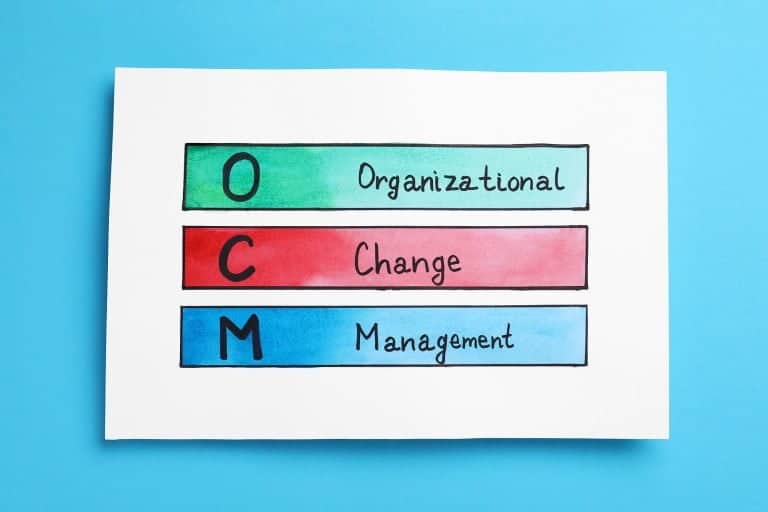Project management has been around for years, with many different methodologies.
Table of Contents
ToggleHowever, in recent times new ways of managing projects have been developed using Agile methods.
These have transformed the discipline to be able to deliver projects at pace in today’s fast-moving world of business and technology.
In this article, we will take a look at what is project management and explore some of the recent developments in this vital discipline.
Let’s take a look at what is project management. A “project” is “a temporary endeavor undertaken to create a unique product, service, or result.”
Each different project management methodology has its own unique definition of how to manage the lifecycle of a project, but in essence, they are trying to do the same thing.
There are many different methodologies used to manage projects.
Dictionaries define a methodology as ‘A system of methods used in a particular area of study or activity.’
Hence a project management methodology provides a system of methods, governance structures, a project management process, and management techniques.
What is project management in detail will vary across different methodologies and organizations, but will all share similar project management principles?
These principles exist to guide the delivery of projects that are on schedule, on budget and are aligned with business goals.
Each project management methodology provides useful and proven methods and techniques for managing projects.
These methodologies can help project managers to deliver results in what can be very complex situations, requiring organizational skills, analytical thinking, and communication skills.
Phases of Managing a Project
Each methodology will have its own interpretation of what is project management and its own variant of the phases of management.
However, in essence, the phases covered in each variant will include similar activities, irrespective of the environment in which they are used.
For example, both IT project management and managing construction projects will include in their project management process activities:
- Project initiation
- Requirements definition
- Planning
- Project execution
- Performance monitoring
- Cost control
- Project closure
Program Management
Program management is related to managing projects, but it is not the same thing.
Program management, sometimes spelled “programme management”, is defined by the APM Body of Knowledge 7th edition as:
the coordinated management of projects and business-as-usual activities to achieve beneficial change.
A program is a unique and transient strategic endeavour undertaken to achieve a beneficial change and incorporating a group of related projects and business-as-usual activities.
One view of the differences between what is program management and what is project management is that:
- A project is unique and is of definite duration. A program is ongoing and implemented within a business to consistently achieve certain results for the business.
- A project is designed to deliver an output or deliverable, and its success will be in terms of delivering the expected output at the expected time, whereas a program’s success will be more challenging to measure.
- Program management includes management of projects which, together, improve the performance of the organization. A program’s success will be measured in terms of benefits.
Business Process Management
Some people confuse what is project management with business process management.
Business process management, or BPM, is a discipline in operations management.
BPM uses various methods to discover, model, analyze, measure, improve, optimize, and automate business processes.
Any combination of methods used to manage a company’s business processes is BPM.
Processes can be structured and repeatable or unstructured and variable.
Project management processes can be included in the scope of business process management.

Project Management Basics
The basics of project management are the same, irrespective of which methodology is used.
This is because they are all designed to manage projects. The key to understanding management basics is to understand the characteristics of these projects:
- Whilst the precise definition of the basics of project management can vary according to the chosen methodology, the purpose of every project should be “to create a unique product, service, or result.” This means a project will be started in order to accomplish a specific goal that is normally outside the remit of the typical day-to-day business operation.
- Every project has a start state and an end state. Hence every guide to project management will include a definition for a project that includes how to determine the start and the end.
- Project management basics require the allocation of resources that are typically outside the scope of day-to-day operations to manage the project.
- Because a project is temporary with a beginning and an end, project management basics state that a project is never part of ongoing operations.
- A concept common to every project management methodology is that projects can be of any size.Projects can be large or major undertakings, involving considerable money, personnel, and equipment, taking many months to complete. Projects can also be of short duration, requiring little resource to achieve. Project management for beginners can be less daunting if they start working on a small project.
- Because none of the methodologies for managing projects mandate the size that a project should be, what at first seems to be a very large undertaking can be divided into smaller scale, related projects. This is a particular feature that can be found in Agile project management basics.
- Whilst all methodologies can be applied to any size of project, some of them, particularly Agile, Lean, and Kanban, are more appropriate for small scale projects.
Essentials
A key part of understanding project management basics is to grasp the essentials that should be defined for every project.
Some of the methodologies mandate how a project is described, others leave the precise definition to the organization using the methodology.
Regardless of the precise methodology used to manage a project, every project should have the following essentials:
- Goal: What is the project trying to achieve?
- Timeline: When are you trying to achieve it by?
- Budget: How much will it cost to achieve?
- Stakeholders: Who are the major players who have an interest in this project?
- Management: Who is going to make sure everything that needs to be completed gets completed?

Project Governance and Control
Every methodology will define its own approach for providing governance and control of the management activities.
The basics of managing projects can vary greatly between different methodologies, particularly between Agile and Waterfall approaches.
However, each requires a guide that can be easily understood by everyone who works on the project.
The project management guide should cover how the following basic activities are done within the organization of the project:
1. Define the Responsibilities For Each Role
This is an essential feature of introducing project management for beginners. No one should have to guess what their responsibilities are. They need to be defined and communicated to all.
2. Identify the Customer and Other Stakeholders
It is important to understand who cares about the project, who will champion it, and who needs to be informed of progress. It is crucial to define who are the customers of project management, as they have a key role to play in it.
3. Confirm the Scope of the Project
Unless the scope is fully defined and agreed upon, there is a risk that the project will never end. Project management basics insist that the scope is confirmed and under control.
4. Gather Project Requirements
Whilst the scope provides a general direction for the project, the requirements will confirm the precise detail for what is required.
5. Identify Targets and Milestones
In the basics of project management for a waterfall approach, this involves creating a work breakdown structure and using that to determine appropriate interim targets and milestones. In Agile, this involves creating and prioritizing user stories.
6. Agree Reporting Requirements
Reporting will provide an indication of a project’s progress, including the highlighting of any issues that need to be addressed.
7. Manage Delivery of the Product
This will vary by methodology but has to be the primary goal of each of them.

Agile Project Management
In recent years the Twelve Principles of Agile that arose from software development have been applied to managing projects.
Agile project management rethinks how projects are managed throughout their lifecycle in order to improve the chances of success and provide improved control over the outcomes.
It provides an iterative approach to managing projects, focusing on the continual release of products that consider customer feedback after every iteration.
This is fundamentally different to historical project management practices, which tended to release all products at the end of the project.
Often, this product was no longer what the customer really needed.
A traditional project required the creation of a comprehensive, detailed project plan, with the initial stages completing design activities, followed by development stages, testing stages, and deployment stages.
In contrast, in an Agile approach to project management, there is no detailed project plan.
Design, development, testing, and deployment are all done in a single short iteration, then done again, and again for subsequent iterations.
Each iteration further develops the product. The aim is to deliver one or more minimum viable products as soon as possible, then enhance them in subsequent iterations.
Using short iterations to deliver a project in incremental stages using an Agile process has several advantages over using a traditional waterfall project management process.
Here are some of them:
- Customer feedback on the minimum viable product can better help them decide what they really want.
- Working products can be delivered much earlier, realizing the value before the end of the full project.
- If the delivery of one product is blocked by an issue outside the control of the project management team, the Agile project management process allows the team to work on another product in the meantime.
- If after seeing an early iteration of the product, the customer decides that they no longer need it, or if external factors make the product obsolete before it is fully delivered, then the Agile project management process facilitates an early termination of the project.
One of the most popular approaches to Agile project management is known as ‘Scrum’.
Traditional project management methodologies fix the requirements in an effort to control time and cost.
In contrast, Agile project management using Scrum fixes time and cost in an effort to control requirements, using time boxes for each iteration.
The project management with Scrum uses frequent collaboration between the project and delivery teams and the customer, a prioritized product backlog, collective decision making, and frequent feedback cycles in order to provide an iterative and incremental product delivery to give the customer what they want.
There are only three roles in Agile project management with Scrum: the Scrum Master, the Product Owner, and the Team.
The Scrum Master is the keeper of the process, the advocate for the team, and the protector of the team.
They remove obstacles, facilitate team communication, mediate discussions within the team, and negotiate with those external to the team.
Above all, they exist in service to the team. The Scrum Master is not in charge of the team but is an important part of it.
The Product Owner represents the voice of the customer and has the authority to make decisions about the product.
This person owns the product backlog and is responsible for communicating the vision to the team and defining and prioritizing backlog items.
The Product Owner works with the team on a daily basis to answer questions and provide product guidance. They are not in charge of the team.
The Scrum Team consists of two to ten people who are jointly responsible for the delivery of the product.
They own the estimates, make task commitments, and report daily status to each other in the daily Scrum.
They are self-organizing, meaning that how they organize themselves is agreed upon without any intervention from outside the team.
The team owns how it chooses to build product features—the team owns the “how,” while the Product Owner owns the “what.”
Agile project management software can be used to support the Agile project management process. Desirable features that you should expect to see in suitable Agile project management software tools include:
- The ability to define and maintain an overarching project plan
- Customization of role for your application of Agile project management
- Workflows that support your project management process
- Integration with Agile software development tools
Buying an Agile project management software tool alone is no guarantee for success with any Agile project management process.
Investment must also be made in your people, to ensure that they understand the Agile principles and can apply the thinking to managing projects.
Project Management Skills
Any project management methodology will fail without good project management skills in the project team.
The precise list of essential project management skills will vary according to the methodology being used.
This is particularly the case for technical project management skills, for example, skills in using Agile projects or in using a particular management tool.
Every project management skills list must also include the softer skills that are required for success.
These are often considered to be the most important project management skills for any organization.
Managing projects is done by people, not by tools or machines.
Whilst the project management fundamentals of each methodology and each environment may be different, these soft skill requirements for managing projects will remain consistent.
Any weakness in these skills must be promptly identified, and education & training put in place to improve these project management skills.
These Soft Skills Include
Emotional intelligence
This skill enables team members to recognize their own emotions, as well as others in the project team so that they can make intelligent adjustments to their behavior and language and handle challenging situations calmly and objectively.
This project management skill will help team members to find common ground and build trust, empathize better, and anticipate team dynamics.
Negotiation/Persuasion Skills
Making things happen always requires an element of negotiation and persuasion.
Project team members are not automatons, they have their own drivers and restrictors.
In every project, there will be occasions when people need to get on with something that they either don’t believe in or don’t want to do.
Using negotiation and persuasion project management skills are always better for long-term culture than using autocratic demands.
Adaptive Communication Skills
This is a vital element of project management skills for every member of a project team, in particular, when Agile methodologies are being used.
Communications must be consistent and clear, and appropriate for the particular audience.
Detail that is required for a project management team member will be too much for a CEO who has a higher level of interest in the project.
Recognize that not all audiences are the same and flex communication styles and content to deliver the right messages to the right audience at the right time.
Listening Skills
Focused listening is a powerful soft skill for managing projects and one that is actually more difficult than it sounds on the surface.
It requires a disciplined effort to listen with a strong intention to understand what is really being communicated.
Active listening is one of the project management fundamentals. It can help to build trust and identify potential risks early.
Examples of where good listening can include:
- going into discussions being prepared to listen without distraction
- behaving as if you are listening, using both verbal and non-verbal feedback signals such as head nodding and ‘u huh’ noises
- being patient, not interrupting others, and pausing before responding
- avoiding jumping to conclusions
- asking questions to confirm understanding
Unlike technical skills, soft skills are difficult to teach, and therefore it can be difficult to provide effective training.
For some people, soft skills come naturally, others will take longer to become proficient in them.
Some team members may never get fully proficient in the full range of these essential project management skills.
That does not mean that they should be left to their own devices. Learning begins with awareness and a desire to improve.
If the project culture demonstrates these soft project management skills, then new team members will see others successfully using them and will start to learn from them.
But like all other aspects of good practice management, gaining proficiency in skills requires practice to improve.
Those who apply a consistent focus to their learning, for both technical skills and the necessary soft skills, will have a better experience and career.
The question of how to improve project management skills comes up often, as mentioned, people will pick up skills be seeing them being used in the workplace. There are also books and training courses.

Project Management Tools
Project management tools are no guarantee to success, but they can take the chore out of managing projects and help you to maintain the necessary records and audit trails.
There are many different tools available for the management of projects. Some of these are free tools, others can require significant investment.
If you’ve never used a tool before, then free project management tools can be a good place to start.
Whilst the tool itself may be free, you will still need to make an investment in training and education.
Project management tools are almost essential for managing complex projects.
Simple project management software, using nothing much more than checklists to keep track of progress, can soon be overwhelmed by complex projects that require detailed planning, multiple task assignments, and critical path analysis.
Project management tools free to use can sometimes seem to be a way to go, but if they don’t do what you want them to do, you could waste time training your staff on using these project management tools and resources, which you later have to abandon.
Program Management Tools
Program management tools, however, can be much more simple.
The detailed management of the individual projects within a program would be managed by more capable project management tools, but in essence, the program management tool just needs to be able to track milestones and the impact of one project on another.
Features to Look For in Project Management Tools
The best project management tools are those that have the flexibility to:
- adapt to different sizes and shapes of projects
- adapt for use with a variety of methodologies
- proportionately quantify, objectify, segregate and delegate tasks to individuals or groups
- report at various levels and tailor the content to specific stakeholders
- be accessed remotely on a range of devices
Selecting a Tool
You can use just one tool or several in conjunction. The number of available tools can make it difficult to decide what are the best project management tools for you.
A good approach is to create a project management tools list of the tools that you’re interested in.
This can start off as a long list that you then reduce as you find out more about the tools and their alignment with what you need.
It can be challenging to identify what’s essential for you, what’s beneficial, and what’s just ‘nice to have,’ but unless you do this, you’re unlikely to select the best project management tool for you.
Features of Today’s Tools
To help you make your selection, here is a list of features that are essential for many organizations today:
- Visual project representation. Techniques such as Kanban boards are often used to visualize your projects. A Kanban board utilizes a simple system that allows everyone on a team to have visibility of progress and issues, both for their owns tasks but also for the wider team activity.
- Task management. Any project is a collection of tasks that must all be completed in order to accomplish a single goal. Tasks can be executed sequentially or simultaneously, and some are dependent on others. Each task needs to be assigned to people on the project team. The more complex the project, the more tasks there are to manage. Without a tool, this can become very time-consuming and error-prone.
- Action lists. Maintaining a list of what needs to be done is essential to managing any project, no matter which methodology is being used. It’s a good idea to have this located in a central, visible location that every team member can easily access.
- Collaboration. Working together is vital for successful project completion. A good project management system must include strong collaboration features so that team members can communicate and work well together, whether across the room or around the globe. Good project collaboration features include things like real-time updates, communication, and automatic notifications.
- Reporting. A good online project management tool allows you to generate project reports that give you and your team insights on project completion, budget status, inefficiencies, and more. Many tools for managing projects come with standard reporting features. It’s even more helpful when those reports can be customized to your project.

Project Management Pros and Cons
There are many different project management pros and cons. Some of these are inherent to all methodologies, but some are specific to individual ones.
The advantages of using formal project management greatly exceed the disadvantages of project planning. In other words, when considering project management pros and cons, there are a lot more pros than there are cons!
Some organizations have found that the main advantages of using a formal rather than an informal method for managing projects have been with intangible benefits, such as a shared understanding of the stages in a project lifecycle, with clearly defined responsibilities and specific roles assigned to specific individuals.
Essentially any formal approach will help you to avoid any nasty surprises. A structured approach to managing projects has been well-proven over time to help them successfully delivery of projects, so there seems to be a very little good argument for not using one.
If you asked 1000 organizations to list all of their project management pros and cons, the pros would run to several pages whilst I doubt if the cons would fill more than a few lines.
Here are some more of the advantages of using formal project management:
- Making effective decisions – this is enabled by having clarity on the roles within a project. Confusion over who is accountable for what decisions is one of the main causes of delay in projects that don’t employ formal management methods.
- Re-use saves money and time – Using the same processes repeatedly for successive projects under the same management framework speeds up the project initiation phase and ensures that projects are delivered more quickly without unnecessary spend on new approaches.
- Controlled project scope is controlled – Lack of control over scope is a common feature of projects that are not mand using formal methods, leading to cost and time over-runs.
- The client knows what to expect – A formal method helps to ensure that client and project team are in agreement on what will be delivered.
- Reduced risk– the risk management processes inherent in formal methods ensure that many risks can be anticipated and mitigated against. The communication processes also means that no one is surprised if a risk does occur.
- Cost control – a defined project with good time and cost estimates and tracking of actual costs all help to keep costs under control.





